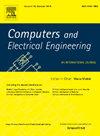Dynamic multiphase DDoS attack identification and mitigation framework to secure SDN-based fog-empowered consumer IoT Networks
IF 4
3区 计算机科学
Q1 COMPUTER SCIENCE, HARDWARE & ARCHITECTURE
引用次数: 0
Abstract
The rapid growth of Consumer-Internet-of-Things (CIoT) devices has introduced critical vulnerabilities, making them susceptible to Distributed Denial-of-Service (DDoS) attacks. This paper proposes a multi-phase framework for detecting and mitigating DDoS attacks in Software-Defined Networking (SDN)-based fog-enabled IoT networks (SD-FCIoT). The framework combines entropy-based anomaly detection with machine learning for accurate and timely attack identification. Dynamic thresholding using Chebyshev’s inequality ensures adaptability to network changes, while an attribute selection algorithm using symmetrical uncertainty and k-means clustering enhances classification accuracy. Experiments conducted in a simulated SD-FCIoT environment and with the BoT-IoT dataset demonstrate the framework’s effectiveness. Random Forest (RF) achieved 98.71% accuracy for binary classification and excelled in multi-class attack detection, including Ping Flood and TCP-SYN Flood attacks. The attribute selection algorithm improved detection accuracy by 1.22% and reduced false positives. Furthermore, the fog-enabled architecture lowered response time by 35% compared to centralized systems. These results highlight the framework’s scalability and efficiency in securing CIoT networks against diverse DDoS attacks.
求助全文
约1分钟内获得全文
求助全文
来源期刊

Computers & Electrical Engineering
工程技术-工程:电子与电气
CiteScore
9.20
自引率
7.00%
发文量
661
审稿时长
47 days
期刊介绍:
The impact of computers has nowhere been more revolutionary than in electrical engineering. The design, analysis, and operation of electrical and electronic systems are now dominated by computers, a transformation that has been motivated by the natural ease of interface between computers and electrical systems, and the promise of spectacular improvements in speed and efficiency.
Published since 1973, Computers & Electrical Engineering provides rapid publication of topical research into the integration of computer technology and computational techniques with electrical and electronic systems. The journal publishes papers featuring novel implementations of computers and computational techniques in areas like signal and image processing, high-performance computing, parallel processing, and communications. Special attention will be paid to papers describing innovative architectures, algorithms, and software tools.
 求助内容:
求助内容: 应助结果提醒方式:
应助结果提醒方式:


